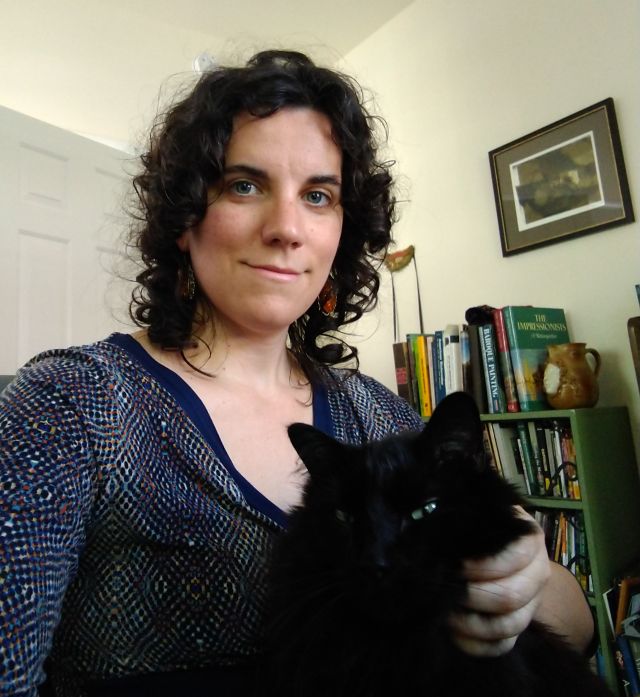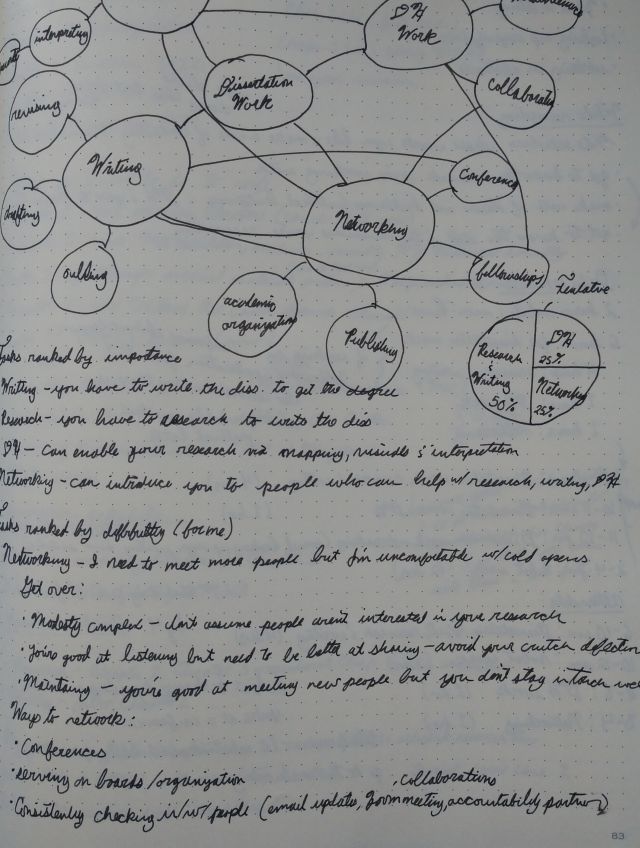The most exciting news about my dissertation right now is that I successfully completed my prospectus colloquium on April 12, and that my project, tentatively titled “Reassessing Art Outreach Exhibitions,” has been approved. This means that the faculty members who read my prospectus agreed that I should move forward with the project. This also means that I have officially completed all the milestones in the program aside from the dissertation itself, including passing a foreign language exam (I did that my first semester, in German), completing coursework, passing written and oral comps, and most recently, submitting the prospectus. A lot of things will likely change about the dissertation as I start working on it, including its title (snazzy titles have admittedly never been a forte of mine, even after years of exhibition work), but the important thing is that I can start working on it.

Not unlike the oral exams, the colloquium wasn’t so much a test as it was a conversation between myself and faculty. It was primarily a chance to answer any questions they had about the prospectus, and for me to listen to any possible suggestions.
One of the things I’ll continue think about moving forward is the balance between addressing historical and contemporary materials. The dissertation initially started out as a strictly historical project, but my ongoing interest in how museums have been responding to the pandemic and other recent crises has also begun influencing my work, as demonstrated in the symposium I helped co-organize in March. So as I start working on the chapters, I’ll be looking to the present as well as the past, though what remains to be seen is the extent to which I decide to address the twenty-first century. I’ve always considered myself a historian at heart, but if the point of studying history is to illuminate the present, then I need to address it on some level beyond a token acknowledgment.
Determining the balance between historical and contemporary concerns isn’t simply an intellectual exercise; it’s also about marketability. Although I initially trained as an art historian, my scholarly interests have increasingly veered toward more cultural-historical models, and the dissertation is no exception. In short, I like working in an interdisciplinary vein, but the qualities that I like about American Studies, such as working in different disciplines or acting more as a generalist than a specialist, can become a weakness in certain job markets, particularly with respect to museums. While some institutions have started to recognize the gatekeeping limitations of restricting hirings to specific degrees, many art museums in particular still expect art historians to serve as their curators. While I do have degrees in art history, my current work might not seem specialized enough for certain curatorial jobs due to my interest in infrastructure rather than individual works of art. Addressing contemporary museum practices more overtly, however, could make me more marketable for consulting positions or other museum-related roles, a point that the various faculty members on my prospectus committee suggested. It’s too early to tell what the job market will look like by the time I’m finishing up, but it’s important to think about the dissertation as not only a degree requirement but an important source for future job application materials.
I’ve talked about these concerns with my advisor before, and we’ll likely continue to address them in the years ahead. But it’s good to know that the faculty here are thinking about my job prospects as well as research potential, and recognize that pursuing the alt-ac course has its own challenges in terms of accessing the right opportunities.

Since completing the colloquium, the main thing I’ve been doing is planning out my research logistics, such as figuring out a daily work schedule for myself, sorting out future archival visits, requesting library books, downloading articles, and so on. Part of the challenge is limited access. Some of the archival repositories I need to visit are still closed due to the pandemic, and I don’t know when they’ll reopen. So I’m prioritizing chapters based on what I either already have available, which fortunately is a lot thanks to pre-pandemic visits, or sections that rely on secondary literature rather than primary sources. It means that my chapters will likely get written out of order, but if I’ve learned anything from listening to my fellow graduate researchers at William & Mary, it’s that there’s no single way to write a dissertation, and you just have to do whatever works for you.
Thinking ahead to job marketability, I’ve also been building networking into my dissertation schedule, since having a robust professional network will increase my chances of finding future collaborators and potential contacts for jobs. Since networking isn’t my favorite activity, I’ve decided to treat it like work and schedule in time every day to make sure I’m either maintaining or growing my list of contacts. As I’ve learned from personal experience, who you know is just as important as what you know, maybe more, so rather than wait for my people to find me, I need to go find them.
I’ve got a lot of work ahead, but overall I’m feeling good about the project. Now that the prospectus is approved, I feel I can really start the work I need to do by beginning the dissertation.
Congratulations, Sara. So glad to hear about your progress and developing interest. You still have your side gig, right? I think even you BA thesis at LF College would demonstrate your art historical chops, too. And your creative linking up of Your New Mexico museum with an east coast one shows great entrepreneurship. Do you know the fairy tale about stone soup?
Thanks Art!